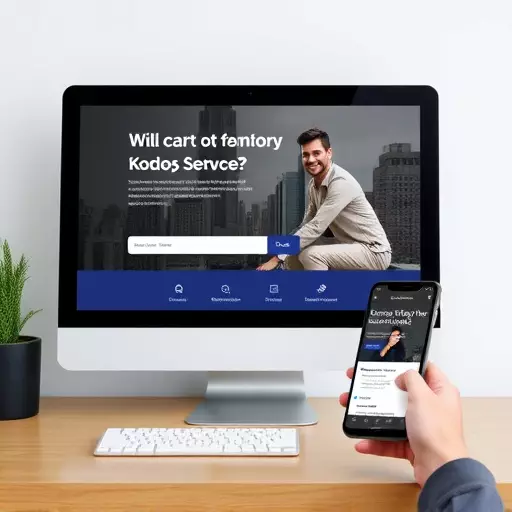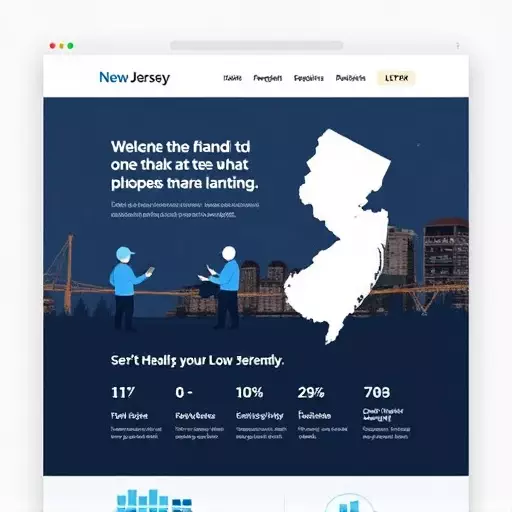Interactive maps are transforming custom landing page design in New Jersey by boosting user engagement for location-based services. Integrating dynamic mapping solutions into responsive designs allows businesses to create immersive experiences that adapt to various screen sizes, offering directions and virtual tours. This mobile-optimized approach not only improves navigation but also enhances brand differentiation, fostering deeper interactions and conversions on landing pages. Prioritizing mobile-friendliness in responsive landing page design is crucial for success in the digital landscape of New Jersey, where a majority of users access websites via smartphones and tablets. By selecting mapping tools with robust functionality and seamless integration, businesses can create interactive maps that effectively convey complex information while providing valuable insights through advanced analytics. Effective placement, clear instructions, and optimal visibility are key to integrating interactive maps for enhanced user experience and improved conversion rates. Measuring success through tracking tools like CTRs and heatmap analytics is vital for refining landing page strategies catering to both desktop and mobile users in New Jersey.
In today’s digital landscape, interactive maps are transforming how visitors engage with custom landing page designs in New Jersey. Understanding the power of these tools can significantly enhance user experience and conversion rates. This article explores the benefits of integrating custom maps into your responsive landing page design, focusing on mobile-friendly solutions. We’ll guide you through choosing the right mapping tools, best practices for effective placement, and tracking engagement to measure success in a competitive market.
- Understanding the Power of Interactive Maps on Landing Pages
- Benefits of Integrating Custom Maps in Your New Jersey Landing Page Design
- Creating Mobile-Friendly and Responsive Map Integration
- Choosing the Right Mapping Tools for Your Landing Page
- Best Practices for Effective Interactive Map Placement
- Measuring Success: Tracking Engagement with Interactive Maps
Understanding the Power of Interactive Maps on Landing Pages

Interactive maps have emerged as a powerful tool to enhance user engagement on landing pages, particularly for businesses focusing on location-based services or targeting mobile audiences in New Jersey. By integrating dynamic and interactive mapping solutions into custom landing page designs, companies can offer visitors an immersive experience that goes beyond static images or basic contact information. This strategy is especially beneficial for creating responsive landing pages that adapt seamlessly to various screen sizes, ensuring an optimal user experience across desktops, tablets, and smartphones.
With a mobile-friendly approach becoming increasingly crucial in today’s digital landscape, interactive maps allow businesses to provide detailed directions, highlight specific locations, or even offer virtual tours within the confines of a single webpage. This not only aids potential customers in navigating to their physical establishments but also serves as a captivating visual element that sets the brand apart from competitors. By leveraging these technological advancements, custom landing page design in New Jersey can transform static web pages into dynamic destinations, fostering deeper interactions and conversions.
Benefits of Integrating Custom Maps in Your New Jersey Landing Page Design

Integrating custom maps into your New Jersey landing page design offers a multitude of benefits that can significantly enhance user engagement and conversions. By incorporating interactive maps, businesses can provide visitors with a clearer understanding of their location, services, and accessibility. This is particularly valuable for local businesses serving specific geographic areas, allowing potential customers to easily visualize the proximity of your offerings.
Moreover, responsive landing page design featuring mobile-friendly maps ensures that your website adapts seamlessly across various devices and screen sizes. With the majority of internet users accessing websites on smartphones and tablets, this optimization is crucial. A well-designed, interactive map not only enriches the user experience but also encourages visitors to spend more time on your site, ultimately increasing the likelihood of them taking the desired action, whether it’s scheduling an appointment, making a purchase, or subscribing to your newsletter.
Creating Mobile-Friendly and Responsive Map Integration

In today’s digital era, creating an engaging and effective custom landing page design in New Jersey requires considering every user’s experience, especially on mobile devices. With a growing number of users accessing websites via smartphones and tablets, ensuring your responsive landing page design is mobile-friendly is paramount. This involves optimizing the layout, content, and interactive elements to adapt seamlessly across various screen sizes and resolutions.
Implementing mobile-friendly landing pages means utilizing responsive web design techniques such as flexible images, fluid grids, and media queries. These strategies enable your map integration to resize and reposition dynamically, providing an optimal viewing experience regardless of the user’s device. By prioritizing mobile users, you enhance user satisfaction and encourage longer engagement, ultimately contributing to better conversion rates for your responsive landing page design in New Jersey.
Choosing the Right Mapping Tools for Your Landing Page

When integrating an interactive map into a custom landing page design for your business in New Jersey, selecting the appropriate mapping tools is key to enhancing user experience and engagement. Consider tools that offer both robust functionality and seamless integration with your chosen platform or CMS (Content Management System). Look for features like customizable markers, pop-ups, and the ability to overlay different map layers, which can help convey complex information in a user-friendly manner. A responsive landing page design is essential; ensure the map adapts beautifully across various devices and screen sizes, especially for mobile-friendly landing pages, given that a significant portion of web traffic originates from smartphones.
Additionally, explore tools with advanced analytics capabilities to track user interactions with the map, providing valuable insights into where visitors are clicking and how they’re navigating your content. This data can guide future optimizations, ensuring your interactive map effectively supports your marketing goals for your custom landing page design in New Jersey, while also catering to the growing demand for mobile-friendly experiences.
Best Practices for Effective Interactive Map Placement

When integrating an interactive map into a custom landing page design for your business in New Jersey, placement is key. Prioritize visibility and accessibility by positioning the map where it’s immediately noticeable yet doesn’t obstruct important call-to-action (CTA) elements. Since many users now access websites via mobile devices, ensure your responsive landing page design incorporates a clear and functional map that adapts seamlessly to various screen sizes. A well-placed interactive map not only guides visitors but also enhances user experience, particularly for those relying on mobile-friendly landing pages to find local services or locations.
Consider the overall layout and content hierarchy of your landing page. Place the map in a section that complements the primary CTAs without competing for attention. For instance, positioning it below a compelling headline or above a detailed service description can strike an effective balance. Additionally, provide clear instructions or tooltips to guide users on how to interact with the map, especially if it includes complex features like zoom functions or markers with clickable information. This ensures visitors understand how to navigate and derive maximum benefit from the interactive element.
Measuring Success: Tracking Engagement with Interactive Maps

Measuring success is a vital aspect of any digital strategy, especially when integrating interactive maps into custom landing page designs for New Jersey businesses. By employing robust tracking tools, marketers can gain valuable insights into user behavior and engagement with these dynamic elements. One key metric to monitor is click-through rates (CTRs) on map features, which indicate how often visitors interact with specific locations or calls-to-action (CTAs) on the map.
Additionally, heatmap analytics can reveal popular areas of interest on mobile-friendly landing pages, helping to optimize content placement and design for maximum engagement. High engagement rates suggest that the interactive map effectively communicates key information, enhances user experience, and encourages visitors to take desired actions, whether it’s making a purchase, requesting a quote, or scheduling a consultation. This data is instrumental in refining landing page strategies, ensuring that responsive designs cater to both desktop and mobile users alike.


